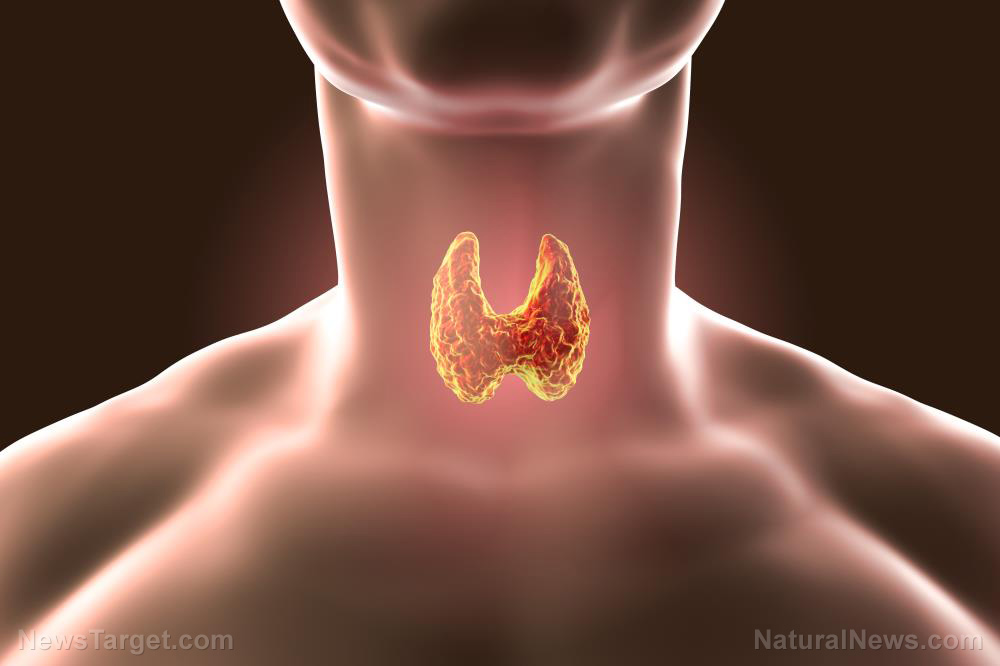Researchers discover a method that can potentially block tumor growth in animal subjects with cancer
02/13/2020 / By Isabelle Z.

In an exciting new development, scientists from the University of Pennsylvania’s Perelman School of Medicine have found what they term the Achilles’ Heel of cancerous tumors.
According to a study published in Nature Cell Biology, activating transcription factor 4 (ATF4) could be the key to conquering cancer. While millions of our body’s cells essentially commit suicide each day to protect us from those that have the potential to be dangerous, cancer cells choose to ignore the cell death signals sent out by our immune system. This new finding could help put a stop to them for good.
The researchers made their discovery by looking at ATF4 in human lymphoma, breast and bowel cells growing a in lab as well as mice with cancer. They discovered that ATF4 controls a chemical pathway that works with the MYC gene, which drives cell growth and enables cancer to take over when it’s mutated. By stopping it, the cancer cells produce too much protein and spur their own death.
Best of all, a treatment that takes advantage of this mechanism might not be too far off as ATF4 inhibitors already exist. The researchers believe that targeting ATF4 in MYC-dependent tumors could be incredibly helpful, but they’d also like to confirm that such an approach won’t lead to any undesired effects.
While MYC controls healthy cell growth in normal circumstances, it can set off a chain reaction when it’s mutated that allows for the proliferation of tumors. Because scientists couldn’t find a way to target it specifically, past efforts have looked at stopping the process indirectly at other points in the chain. Although past research has shown that one of these steps is regulated by the PERK kinase, this study showed that blocking PERK isn’t a foolproof approach to stopping tumor growth as a second kinase, GCN2, is also involved.
One of the study’s co-senior authors, Dr. Constantinos Koumenis, commented: “What we’ve learned is that we need to go further downstream to block tumor growth in a way that cancer cells can’t easily escape, and our study identifies the target to do just that.”
The target in question is ATF4 itself as that’s where the two signal pathways involved converge. Not only does ATF4 turn on the genes needed by MYC to grow, but it also controls the rate at which the cells make proteins known as 4E-BP.
When the researchers stopped ATF4 in cells or in mice, tumors continued to raise their production of 4E-BP, which eventually resulted in the cells dying from stress. This had the effect of stopping bowel tumors and lymphomas from growing.
The researchers would also like to carry out further studies looking into why ATF4 works in this way in hopes of increasing their understanding of whether there might be other potential targets within the chain.
Vitamin D could play a big role in the cancer fight
In other positive cancer-related news, a study published in Drug Metabolism and Disposition found that two active forms of vitamin D, calcipotriol and calcitriol, can block a mechanism that allows cancerous cells to become drug-resistant.
It works by targeting cancer cells that have too much MRP1, a protein that lives within cell walls and ejects the cancer drugs out of the cell. This incredible ability to selectively destroy drug-resistant cancer cells could see cancer patients relying on far less medication.
Around 90 percent of chemotherapy failures are attributed to acquired drug resistance, and this could end up counteracting that and improving patient outcomes.
Although cancer remains a devastating illness, scientists are gaining greater insight into how it works every day, and these studies could well form the foundation of a safe and effective cancer treatment in the future.
Sources for this article include:
Tagged Under: ATF4, cancer, cancer treatment, lymphoma, medical tech, natural medicine, research, vitamin D
RECENT NEWS & ARTICLES
CancerTumors.News is a fact-based public education website published by Cancer Tumors News Features, LLC.
All content copyright © 2018 by Cancer Tumors News Features, LLC.
Contact Us with Tips or Corrections
All trademarks, registered trademarks and servicemarks mentioned on this site are the property of their respective owners.


















